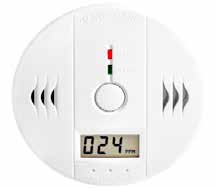Managing Risk: Preventing Carbon Monoxide Poisoning

On March 25, police discovered four people dead inside Building G of the Evergreen Apartments in Wilmington, Delaware. Exhaust pipes designed to vent carbon monoxide from the gas boilers in the basement rusted and collapsed. The cause of death was carbon monoxide poisoning.
Carbon monoxide kills. We know this. The gas produced when fuels like oil, coal, and wood do not fully burn is dangerous, causing headaches, dizziness, vomiting, and death. But knowledge of the danger of carbon monoxide is not the same as protection from it. That’s because it is odorless, colorless, and tasteless. Which is why we continue to hear the tragic stories of lives lost to this deadly gas.
But for owners and managers of hotel and rental properties, this isn’t only about lives. It’s also about liability. For example, the owners of the Evergreen Apartments mentioned above are now being sued for negligence for not repairing the boiler and failing to install and maintain carbon monoxide detectors. And a hotel management company in Boone, North Carolina had to close its doors as part of a settlement with the families of three who died from a carbon monoxide leak in a pool heating system.
While carbon monoxide poisoning at hotels and apartments is rare, tragic outcomes like these demonstrate how serious an issue it is. Hotel and apartment owners have a responsibility to meet the highest standards of guest and resident safety. In addition to the potential loss of life, criminal and civil cases can be costly and extremely damaging to a brand’s reputation.
As a property owner or manager, you should be taking all available precautions to ensure that rooms are safe and free of carbon monoxide emissions. For tips on how to do this, check out the Managing Risk Bulletins on preventing carbon monoxide poisoning in hotels and apartments.




